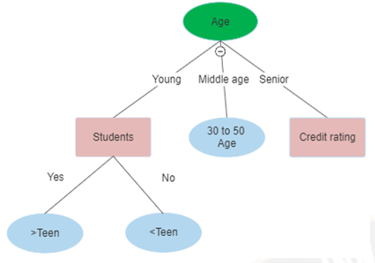CCNN: An Artificial Intelligent based Classifier to Credit Card Fraud Detection System with Optimized Cognitive Learning Model
Main Article Content
Abstract
Nowadays digital transactions play a vital role in money transaction processes. Last 5 years statistical report portrays the growth of internet money transaction especially credit card and unified payments interface. Mean time increasing numerous banking threats and digital transaction fraud rates also growing significantly. Data engineering techniques provide ultra supports to detect credit card forgery problems in online and offline mode transactions. This credit card fraud detection (CCFD) and prevention-based data processing issues raising because of two major reasons first, classification rate of legitimate and forgery uses is frequently changing, and next one is fraud detection dataset values are vastly asymmetric. Through this research work investigating performance of various existing classifier with our proposed cognitive convolutional neural network (CCNN) classifier. Existing classifiers like Logistic Regression (LR), K-nearest neighbor (KNN), Decision Tree (DT) and Support Vector Machine (SVM). These models are facing various challenges of low performance rate and high complexity because of low hit rate and accuracy. Through this research work we introduce cognitive learning-based CCNN classifier methodology with artificial intelligence for achieve maximum accuracy rate and minimal complexity issues. For experimental data analysis uses dataset of credit card transactions attained from specific region cardholders containing 284500 transactions and its various features. Also, this dataset contains unstructured and non-dimensional data are converted into structured data with the help of over sample and under sample method. Performance analysis shows proposed CCNN classifier model provide significant improvement on accuracy, specificity, sensitivity and hit rate. The results are shown in comparison. After cross-validation, the accuracy of the CCNN classification algorithm model for transaction fraudulent detection archived 99% which using the over-sampling model.
Article Details
References
Fawaz Khaled Alarfaj, Iqra Malik, Hikmat Ullah Khan, Naif Almusallam, Muhammad., “Credit Card Fraud Detection Using State-of-the-Art Machine Learning and Deep Learning Algorithms”, IEEE Access, Vol 10, ISSN: 2169-3536, pp- 39700 – 39715, DOI: 10.1109/ACCESS.2022.3166891, 2022.
Shoufei Han, Kun Zhu, MengChu Zhou, Xinye Cai, “Information-Utilization-Method-Assisted Multimodal Multi-Objective Optimization and Application to Credit Card Fraud Detection”, IEEE Transactions on Computational Social Systems, Vol 8, Issue 4, pp – 856-869, DOI: 10.1109/TCSS.2021.3061439, 2021.
J. O. Awoyemi, A. O. Adetunmbi, S. A. Oluwadare, “Credit Card Fraud Detection Using Machine Learning Techniques: A Comparative Analysis”, International Conference on Computing Networking and Informatics (ICCNI), pp – 1-9, doi.org/10.1109/iccni.2017.8123782, 2017.
El Barakaz Fatima, Boutkhoum Omar, El Moutaouakkil Abdelmajid, Furqan Rustam, “Minimizing the Overlapping Degree to Improve Class-Imbalanced Learning Under Sparse Feature Selection: Application to Fraud Detection”, IEEE Access, Vol 9, ISSN: 2169-3536, pp-28101-28110, DOI: 10.1109/ACCESS.2021.3056285, 2021.
Y. Sahin, E. Duman, “Detecting credit card fraud by ANN and logistic regression”, International Symposium on Innovations in Intelligent Systems and Applications, DOI: 10.1109/INISTA.2011.5946108, 2011.
Jin-Yi Cai, Michael Kowalczyk, Tyson Williams, “Gadgets and Anti-Gadgets Leading to a Complexity Dichotomy”, ACM Transactions on Computation Theory, Vol 11, Issue 2, pp – 1-26, https://doi.org/10.1145/3305272, 2019.
Seeja, K. and Zareapoor, M. J. T. S. W. J. 2014. FraudMiner: A novel credit card fraud detection model based on frequent itemset mining. 2014.
Reem M. Own, Sameh A. Salem, Amr E. Mohamed, “TCCFD: An Efficient Tree-based Framework for Credit Card Fraud Detection”, 16th International Conference on Computer Engineering and Systems (ICCES), 10.1109/ICCES54031.2021.9686121, 2021.
Houssem Sifaou,Abla Kammoun,Mohamed-Slim Alouini, “High-dimensional linear discriminant analysis classifier for spiked covariance model”, The Journal of Machine Learning Research , Vol 21, Issue 1, pp - 4508–4531, 2020.
Snehal Patil, Harshada Somavanshi, Jyoti Gaikwad, Amruta Deshmane, Rinku Badgujar, “Credit Card Fraud Detection Using Decision Tree Induction Algorithm”, International Journal of Computer Science and Mobile Computing, Vol 4, Issue 4, pp – 92-95, 2015.
Anjali Singh Rathore, Ankit Kumar, Depanshi Tomar, Vasudha Goyal, Kaamya Sarda, Dinesh Vij, “Credit Card Fraud Detection using Machine Learning”, 2021 10th International Conference on System Modeling & Advancement in Research Trends (SMART), DOI: 10.1109/SMART52563.2021.9676262, 2021.
K. Randhawa, C. K. Loo, M. Seera, C. P. Lim, and A. K. Nandi, ‘‘Credit card fraud detection using AdaBoost and majority voting,’’ IEEE Access, vol. 6, pp. 14277–14284, 2018.
H. Tingfei, C. Guangquan, and H. Kuihua, ‘‘Using variational auto encoding in credit card fraud detection,’’ IEEE Access, vol. 8, pp.
–149853, 2020. F. Wang, Z. Li, F. He, R. Wang, W. Yu, and F. Nie, ‘‘Feature learning viewpoint of AdaBoost and a new algorithm,’’ IEEE Access, vol. 7, pp. 149890–149899, 2019
Emmanuel Ileberi, Yanxia Sun, Zenghui Wang, “Performance Evaluation of Machine Learning Methods for Credit Card Fraud Detection Using SMOTE and AdaBoost”, IEEE Access, Vol 9, ISSN: 2169-3536, pp - 165286 – 165294, DOI: 10.1109/ACCESS.2021.3134330. 2021.
J. Feng, H. Xu, S. Mannor, and S. Yan, ‘‘Robust logistic regression a classification,’’ in Proc. Adv. Neural Inf. Process. Syst., vol. 27, pp. = 253 – 2014.
K. Kirasich, T. Smith, and B. Sadler, ‘‘Random Forest vs logistic regression: Binary classification for heterogeneous datasets,’’ SMU Data Sci. Rev., vol. 1, no. 3, p. 9, 2018.
Alghamdi, M. et al. 2017. Predicting diabetes mellitus using SMOTE and ensemble machine learning approach: The Henry Ford Exercise Testing (FIT) project. 12(7), p. e0179805, 2017.
Han, H. et al. eds. 2005. Borderline-SMOTE: a new over-sampling method in imbalanced data sets learning. International conference on intelligent computing. Springer, 2005.
T. T. Wong and P. Y. Yeh, ‘‘Reliable accuracy estimates from k-fold cross validation,’’ IEEE Trans. Knowl. Data Eng., vol. 32, no. 8, pp. 1586–1594, Apr. 2019.
D. Elreedy and A. F. Atiya, ‘‘A comprehensive analysis of synthetic minority oversampling technique (SMOTE) for handling class imbalance,’’Inf. Sci., vol. 505, pp. 32–64, Dec. 2019
M. C. M. Oo and T. Thein, ‘‘An efficient predictive analytics system for high dimensional big data,’’ J. King Saud Univ. Comput. Inf. Sci., vol. 34, no. 1, pp. 1521–1532, Jan. 2022.
S. N. Kalid, K.-H. Ng, G.-K. Tong, and K.-C. Khor, ‘‘A multiple classifiers system for anomaly detection in credit card data with unbalanced andoverlapped classes,’’ IEEE Access, vol. 8, pp. 28210–28221, 2020.
I. D. Mienye and Y. Sun, ‘‘Performance analysis of cost-sensitive learning methods with application to imbalanced medical data,’’ Informat. Med. Unlocked, vol. 25, Art. no. 100690, 2021.
B. Wiese and C. Omlin, ‘‘Credit card transactions, fraud detection, and machine learning: Modelling time with LSTM recurrent neural networks,’’ in Innovations in Neural Information Paradigms and Applications. Springer, pp. 231–268, 2009.
F. Wang, Z. Li, F. He, R. Wang, W. Yu, and F. Nie, ‘‘Feature learning viewpoint of AdaBoost and a new algorithm,’’ IEEE Access, vol. 7, pp. 149890–149899, 2019.
S. P. Maniraj, A. Saini, S. Ahmed, and S. Sarkar, ‘‘Credit card fraud detection using machine learning and data science,’’ Int. J. Res. Appl. Sci. Eng. Technol., vol. 8, no. 9, pp. 3788–3792, Jul. 2021.
S. Khatri, A. Arora, and A. P. Agrawal, ‘‘Supervised machine learning algorithms for credit card fraud detection: A comparison,’’ in Proc.10th Int. Conf Cloud Comput., Data Sci. Eng. (Confluence), pp. 680–683, jan 2020.
T. Hengl, M. Nussbaum, M. N. Wright, G. B. M. Heuvelink, and B. Gräler, ‘‘Random Forest as a generic framework for predictive modeling of spatial and spatio-temporal variables,’’ PeerJ, vol. 6, p. e5518, Aug. 2018.
N. F. Ryman-Tubb, P. Krause, and W. Garn, ‘‘How artificial intelligence and machine learning research impacts payment card fraud detection: A survey and industry benchmark,’’ Eng. Appl. Artif. Intell., vol. 76, pp. 130–157, doi: 10.1016/j.engappai.2018.07.008, 2018.
S. S. Lad, A. C. Adamuthe, ‘‘Malware classification with improved convolutional neural network model,’’ Int. J. Comput. Netw. Inf. Secur., vol. 12, no. 6, pp. 30–43, doi: 10.5815/ijcnis.2020.06.03, 2021.

